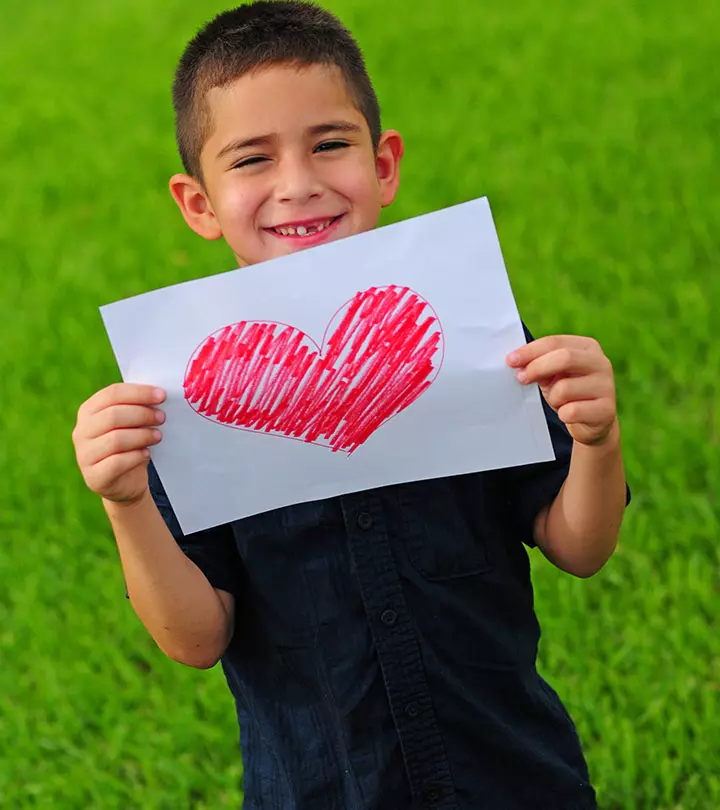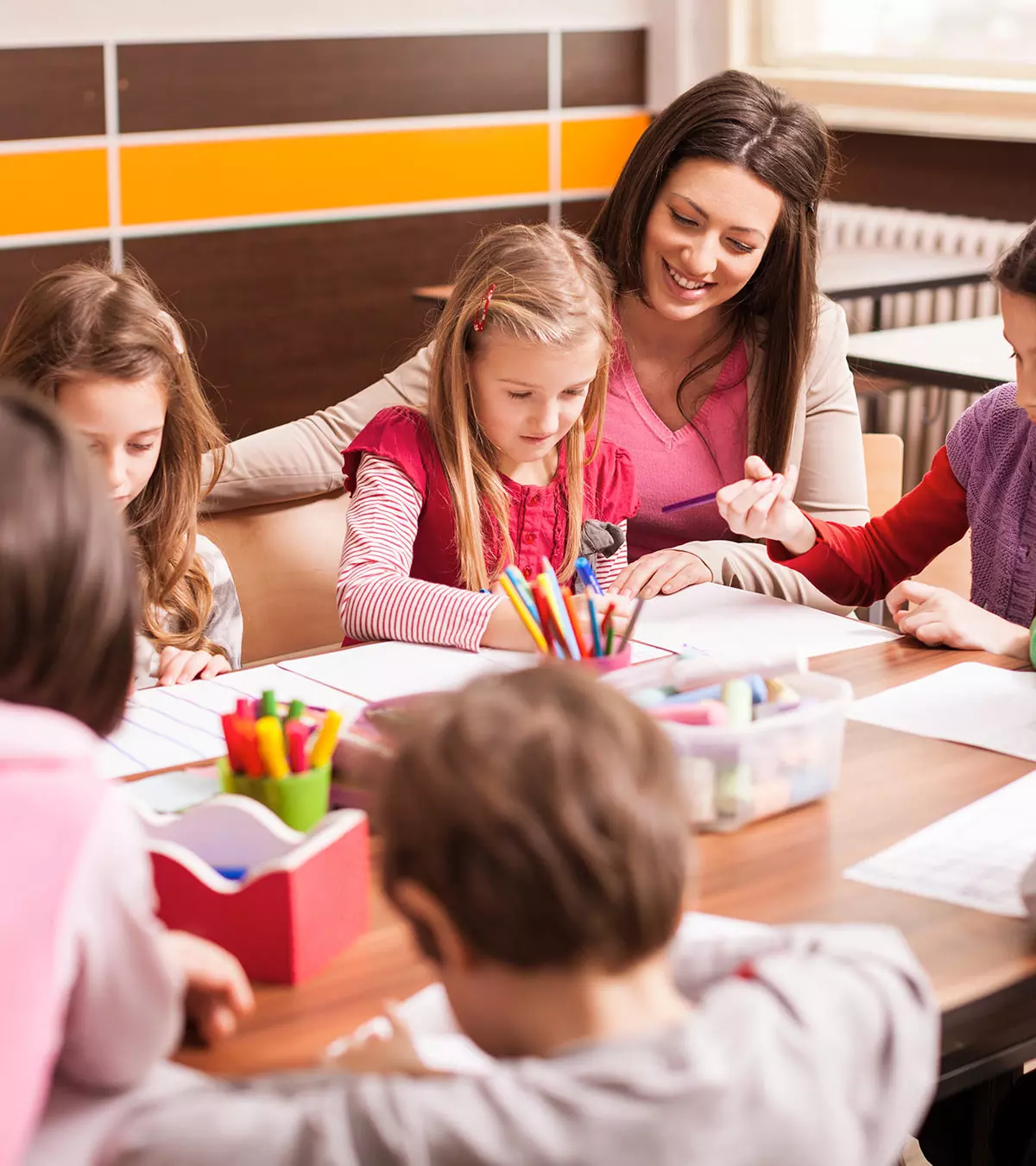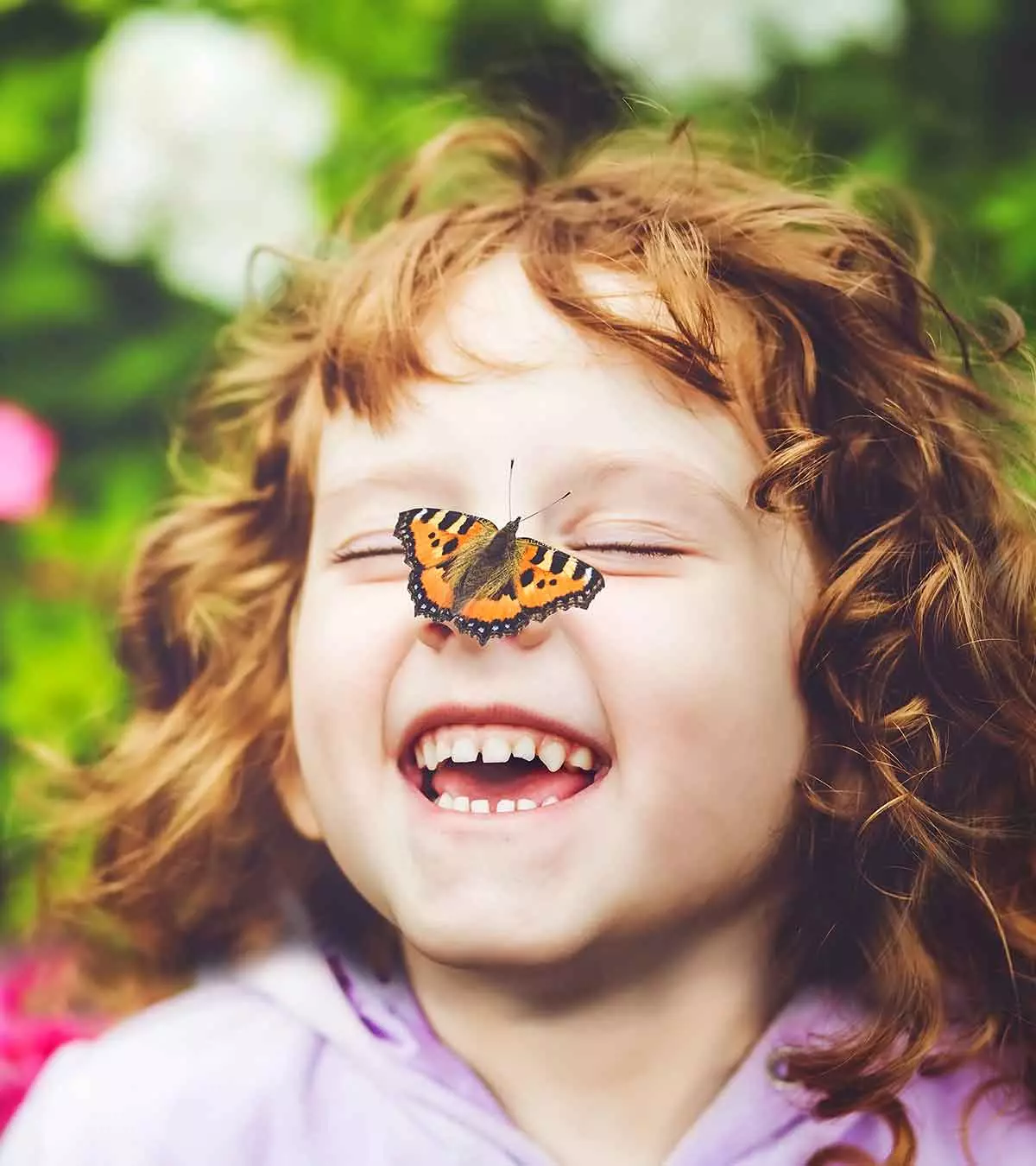
Image: Shutterstock
Kindness is a virtue that defines a person overall. Inculcate this positive attribute in your munchkins by teaching them kindness activities for kids from our post. An act of kindness can help someone in dire need and inspire them to do the same. Teaching the significance of kindness in the formative years will make the good samaritans for tomorrow. It also makes them compassionate and considerate towards others’ needs. Kindness activities help children develop empathy and build a sense of connection with others. It also teaches them to value different viewpoints and observe actions that can positively affect others.
So read through our post and start practicing the activities with your little ones and make them loving people who can change the world.
Key Pointers
- Small acts of kindness boost a child’s self-esteem and health.
- Children can learn kindness through simple tasks such as sending out thank you notes or being a community and animal helper.
- Giving some flowers or chilled lemonade or offering kind words or hugs are also acts of kindness.
Advantages Of Teaching Kindness To Kids
Kindness is a form of self-love. The kinder you are to others, the kinder you are to yourself. Here are some advantages of teaching kindness, empathy, and generosity to children.
1. Kind people are happier
Being kind and empathetic towards others is one of the important life lessons for kids. When you are kind to someone, it increases the levels of endorphins in your body (1). Endorphins are known as happy hormones, and with an increase in them, you feel happier and content.
2. Kind people do not bully
Kind and understanding people are empathetic to other people’s feelings and rarely resort to bullying. They are more likely to draw people nearer with their kindness and befriend them. This reduces their chances of getting bullied too.
 Quick fact
Quick fact3. Kind people have better self-esteem
Our society functions smoothly because of various community helpers. Ask your children to think of some people who make the community better and express their gratitude. They could think of doctors, nurses, teachers, police personnel, firefighters, garbage collectors, etc. Let your children make a card for the helpers they meet and see their faces light up as your children hand it over to them (2).
4. Kind people are healthier
Besides endorphins, hormones such as dopamine and serotonin are released in your body when you show kindness to someone (3). These hormones combat stress and anxiety and heighten a person’s sense of well-being. They also improve your mood and keep your mental health in good condition.
21 Kindness Activities For Kids
Teach kindness actively to children and be kind yourself, as children learn by watching you. With these kindness activities for kids, you will be able to instill the quality of kindness into them.
1. Make a kindness jar
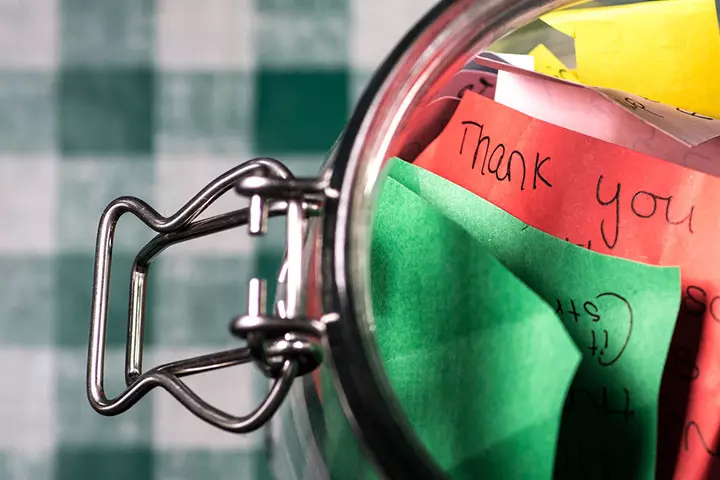
Convert a mason jar into a kindness jar. Whenever your child does anything thoughtful and kind, write it on a post-it note and put it into the jar. This is a visual reminder for you and your child about how kind they are. You can also remove them and read them together at the end of each year.
2. Raise funds for the needy
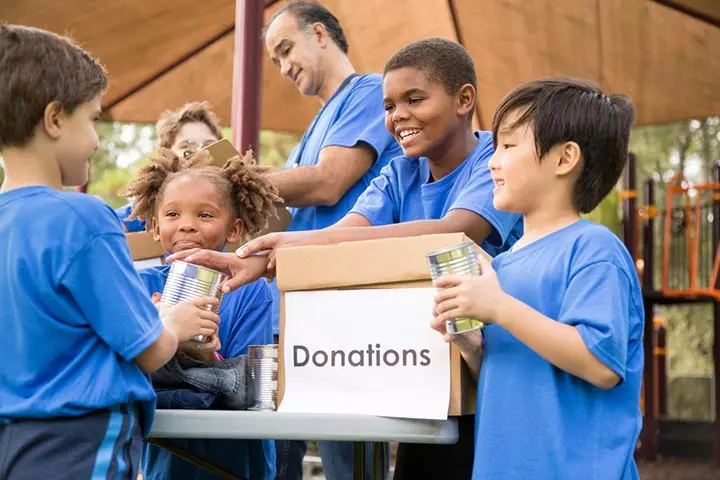
Let your children pick the cause they wish to support and raise funds for it. Assist them in the activities, but let them do the majority of the work. Help them design pamphlets, print them out, distribute them among neighbors and friends, and sell their goods (cakes, lemonade, cleaning services, crafts, etc…
They could then donate the funds to the cause. It might not be a considerable amount, but it will give your children a sense of accomplishment.
3. Thank a community helper

Our society functions smoothly because of various community helpers. Ask your children to think of some people who make the community better. They could think of doctors, nurses, teachers, police personnel, firefighters, garbage collectors, etc. Let your children make a card for the helpers they meet and see their faces light up as your children hand it over to them.
4. Make birthday boxes

Make someone’s day memorable by celebrating your child’s birthday in a special way. Assemble boxes of random gifts and decorations to distribute among people who cannot afford to celebrate their birthdays in a good way.
5. Write sidewalk messages

All you need is chalk, and you are set for this activity. Everyone likes some appreciation, and your children can write an encouraging message on the sidewalk for a particular person or a community. These happy messages make everyone smile and make their day better, even those who have not been mentioned in it.
6. Donate clothes to needy people

While fundraisers are great, younger children might not be as invested in them as older children as they often cannot see any direct impact on the way the money is used.
Instead, try this activity as it is more tangible and gives your child the happiness of donating. Let your children choose the clothes they do not need anymore and give them away. This activity is also a great way for teaching children to share.
7. Write “Thank You” notes

If your children already write thank you notes to everyone after the holidays, they will have an idea of what to do. However, this activity is not restricted to thanking everyone after receiving gifts but to everyone they feel has positively affected their lives. Ask them to write a happy note or draw a picture and appreciate them for being in their life.
8. Care for animals

Caring for animals is one of the best ways to show kindness. Children often love doing such activities. Volunteering or feeding street dogs by visiting a nearby shelter can be a wonderful way to teach children about empathy and kindness. Caring for animals can also help encourage positive behavior in children.
 Did you know?
Did you know?9. Make blessing bags
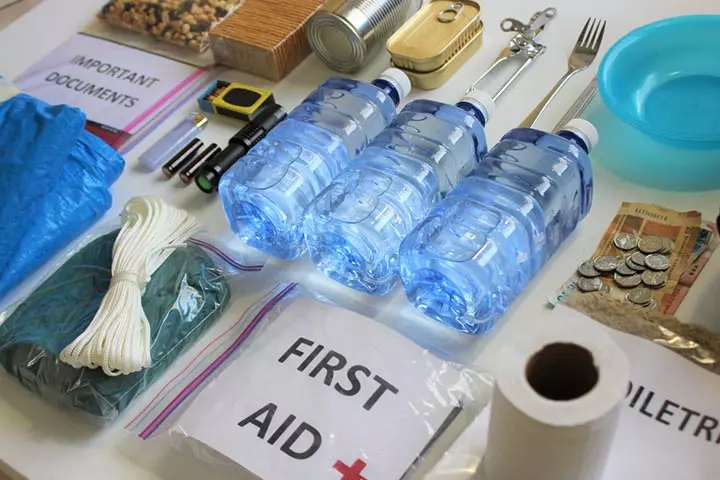
This activity will make your children appreciate the little things they take for granted in their lives. Pack blessing bags with a few daily utilities, such as body soap, toothpaste, toothbrush, hand towel, socks, wipes, dish soap, and detergent. Distribute these among the homeless or people affected by a natural calamity.
10. Make a kindness craft
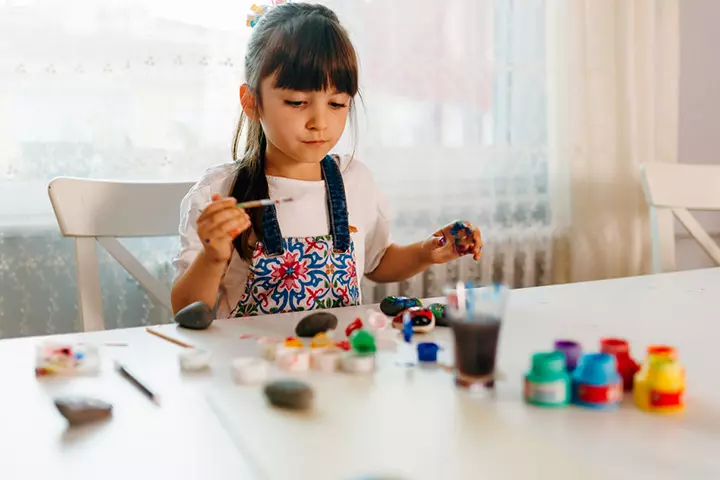
Making kindness crafts is among the interesting activities for kids to engage in creatively and positively. Your children will be keen to make this and get inspired from it to be kind every day. Create a rainbow or a heart with construction paper, glue a few strings on the underside of the craft so that they hang. Use post-its or small paper cut-outs to write various kindness quotes. Glue these to the free end of the strings and display the craft in a prominent place.
11. Make kindness paperweights

Kindness paperweights are easy to make and spread a lot of cheer. Find smooth rocks on your walks. Wash them thoroughly and paint them in bright colors. Decorate them with googly eyes or write positive messages on them. Gift them to the people you value in your life.
12. Make a love letterbox
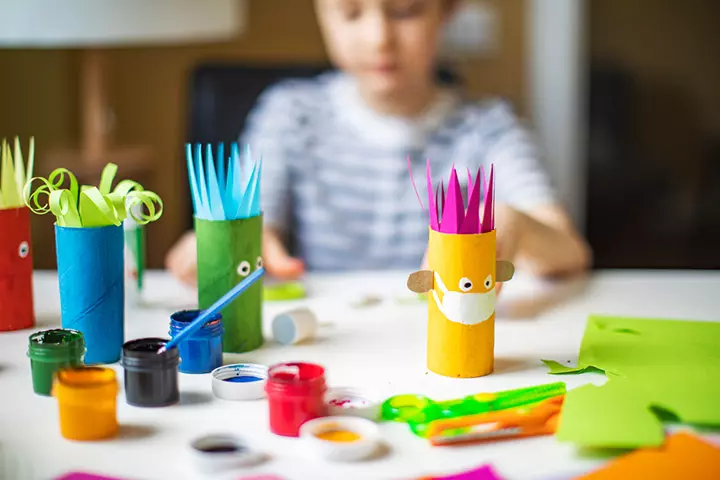
This activity is easy to do even if your children are pretty young. All you need is cardstock and some popsicle sticks. Fold the cardstock to make a hollow tube and secure the edges together. Write little kindness tasks on the popsicle sticks and put them in the tube daily. You can write simple tasks for young children such as “Hold the elevator door open,” or “Help someone carry their bag.”
13. Gift love clips

Gifting love clips is the best way to show appreciation and surprise someone. You will get several printable materials on the Internet for love clips, or you can make them yourself too. Cut a circle or a square out of construction paper, draw something, and write a positive message. Glue a clothespin behind it, and you are done. Clip it on a pillow or your children’s t-shirt for them to display it proudly.
14. Make kindness bookmarks

If your children love reading books, they can make these cute kindness bookmarks for themselves and other avid readers they know. These bookmarks are easy to make, and your child can gift them with their favorite book as well. Cut cardstock into 2”x8” strips and punch a hole at the top. Tie a ribbon through it. Decorate the bookmarks however you wish and write a kind message.
15. Make paper chains

This is a great way to remind your children to be kind and tell them that kindness matters. Cut colorful construction paper into strips and ask your children to write down every kind act they have done. They can include acts such as sharing toys with their siblings or helping mom with her work. Make a paper chain with these strips and tell them that they can add to the chain every time they do a kind act.
16. Pass on bags of joy

Everyone needs a surprise occasionally, and these bags of joy do just that. They make the receiver smile and give your children the satisfaction of sharing their lunch with someone. Take a lunch bag and fill it with a water bottle, a cold drink, some store-bought snacks and chocolate bars, and a gift card that tells them how much they matter to your child.
 Trivia
Trivia17. Fix a wrinkled heart

This craft can help you reinforce the point to your children that harsh words can hurt people. Cut out a heart shape from red construction paper and a smaller heart from light-colored paper. Stick the smaller heart in the middle of the bigger one and write a sweet message on it that reminds children to be respectful of others and never use harsh words.
Crumple some tissue, flatten it out again, and stick it around the smaller heart and on the bigger heart. Apply colorful band-aids on the tissue and write kind words they can use.
18. Give compliments

Acts of kindness do not necessarily mean creating something and giving it away. Giving compliments and using polite words to acknowledge someone’s efforts is a powerful form of encouragement and can make someone’s day. Telling someone they look good or they are doing a great job gives a big boost to people’s self-esteem.
19. Give flowers

Children meet many people daily – people of integrity who need to be appreciated for their work. They can cut some flowers from their garden or buy some and present them to their teacher. They can also visit a nursing home and give some flowers to the patients and the nurses. These little acts cost little to us but mean a lot to the people who receive them.
20. Start a free lemonade stand
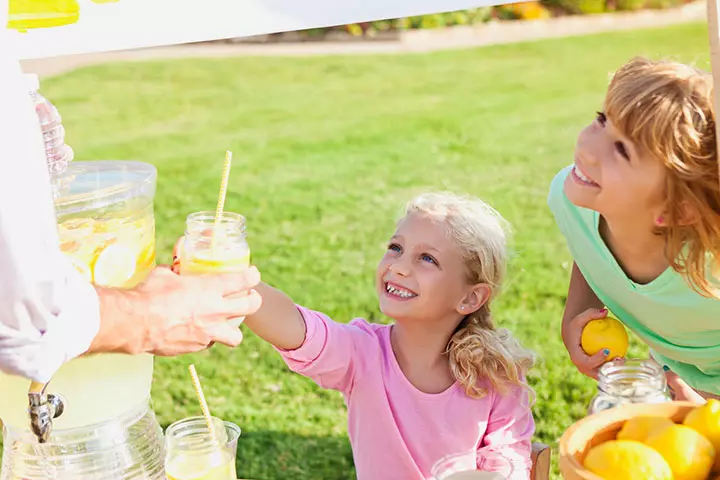
Who doesn’t love some chilled lemonade on a sunny day? Set up a stall on your front lawn. Help your child prepare loads of lemonade and a pretty signboard. Get some cups, put a bin for disposal, and you are done.
21. Brainstorming sessions

Brainstorming sessions are an excellent way to teach children how to be kind. In these sessions, children can share their ideas and listen to others, which helps them understand and respect different views. They learn to work together and feel a sense of accomplishment when they achieve something as a group. This activity makes them feel confident about their ideas and creativity. It’s a way for them to solve problems and feel part of a caring community. It can positively influence their personality as they learn to care for and understand others. All of this helps children learn how to be kind and compassionate.
Frequently Asked Questions
1. Why should schools teach kindness?
Schools should teach kindness as it has been seen to help children improve attention spans, creativity and academic results. It may also help them connect with others, uplift energy, increase their awareness, and improve friendships (4).
2. Is kindness a moral value?
Yes, kindness is a moral virtue that manifests itself in situations that require an ethical response, compassion and empathy (5).
3. How can small acts of kindness make a difference?
Introducing some engaging kindness activities for kids is a great way of instilling them with the virtue of compassion. These activities help them learn about the act of giving and being empathetic towards others’ needs and feelings. Encourage your children in some fun activities such as making cards for community helpers and celebrating their birthdays by distributing gifts and clothes to the needy. Further, giving flowers and compliments is also the ideal way to display kindness. These kindness and empathy activities for kids will help them learn about the importance of kindness.
Infographic: Kindness Activities For Children
It is essential to teach your child the importance of being kind. To help your child learn about kindness, we prepared a list of activities that might come in handy. Engaging your child in these activities can help them be kind toward other beings. So, read on and stick the infographic to your little one’s wall. Illustration: Momjunction Design Team
Illustration: MomJunction Design Team
Illustration: Simple Kindness Activities For Kids
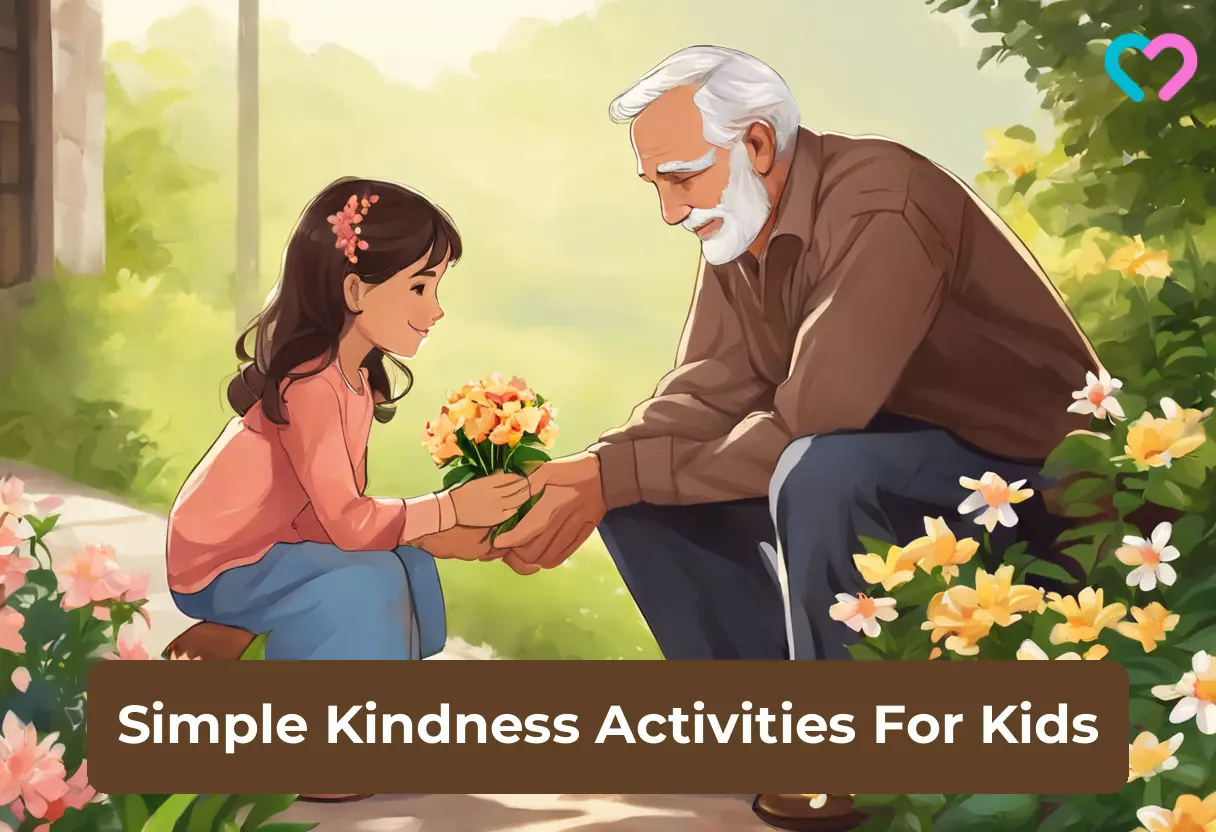
Image: Stable Diffusion/MomJunction Design Team
Learn how to make these fun and easy crafts with your kids and teach them the importance of kindess. This step-by-step tutorial is easy to follow and portrays the perfect way to spend quality time with your child.
References
1. The Science Behind Kindness and How It Benefits Your Health; University Hospitals
3. The art of kindness; Mayo Clinic Health System
4. 5 Benefits to Teaching Kindness in School; Far Hills Country Day School
5. Random Acts of Kindness: Displaying Moral Character or the Pursuit of Likes?; University of Birmingham
6. Kindness matters guide; Mental Health Foundation
Community Experiences
Join the conversation and become a part of our nurturing community! Share your stories, experiences, and insights to connect with fellow parents.
Read full bio of Dr. Sadhvi Mythili
Read full bio of Nisha Bharatan
Read full bio of Harshita Makvana
Read full bio of Kavita Kankani











